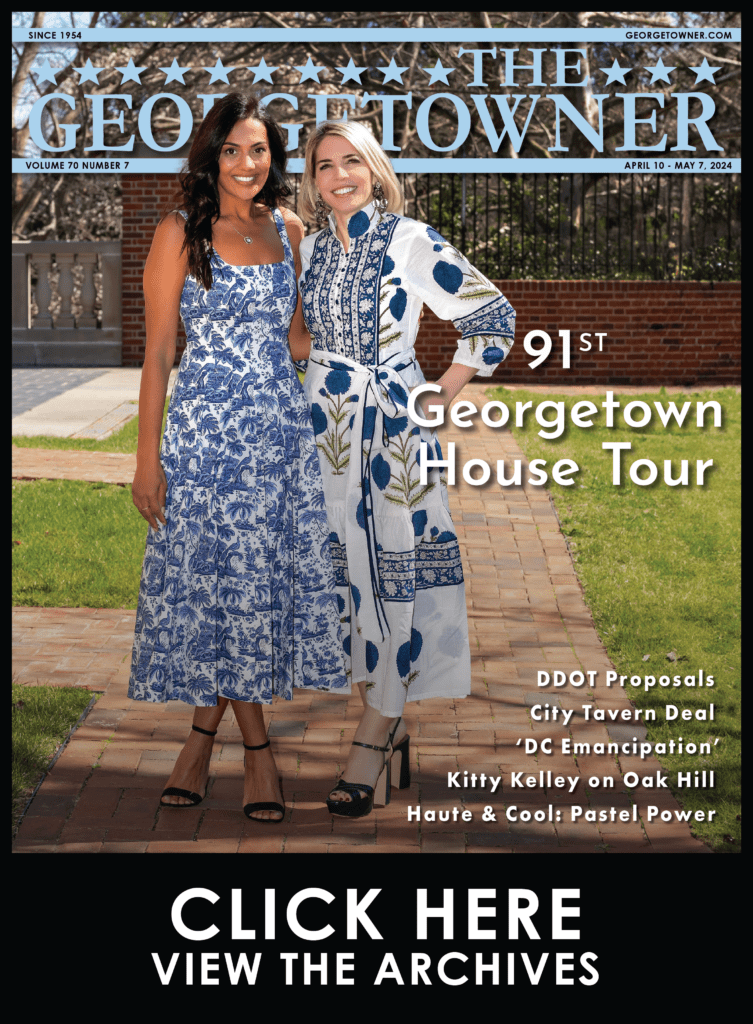War Horse’s Puppetry Plays Leading Role
By • October 26, 2012 0 1133
Let’s be straight about this: “War Horse” is not the best play ever written. It’s not Shakespeare, but the touring version of the Tony Award-winning play now at the Kennedy Center’s Opera House through Nov. 11 may be one of the best staged theatrical productions you will likely to encounter. That’s saying something in our digital, tech-savy world that includes the performing arts.
“War Horse”, at its heart, is a deeply-rooted, deeply felt old story: boy meets horse, boy and horse fall in love, boy trains horse, boy loses horses, to the vast killing fields of World War I France no less, boy enlists in the English army to find horse, while horse tries to survive as a cavalry mount, horse falls into the hands of a sympathetic German officer, while boy searches, through barbed wire and ferocious combat, for his horse. The rest is for you to find out and for me not to tell you, although if you’ve seen Steven Spielberg’s film version, you probably know how it ends, and if you can’t figure it out , well, it’s almost Christmas.
It’s the journey, or, rather, the context, the sets and setting, and most importantly, the horse, that matters in “War Horse.” This production uses everything that’s available to contemporary stagecraft-a skrim that fills up the back of the stage as a kind of moving narrative of video, film and special effects, music both live and otherwise that moves the narrative and is moving itself, light, noise and contraptions-notably a World War I tank, bigger than it should that makes an overpowering, frightening appearance on the stage.
Most of all, there is the magic work of the Handspring Puppet Company of South Africa, which brings to life a birds, vultures and a fussy duck, who sometimes terrorizes the denizens of an entire English farm of the period. Mostly it creates horses, lean, worn out work horses, Topthorn, a gleaming black and powerful steed and competitive comrade.
And there’s Joey, the War Horse, the star, the hero and heart of this play, a giant, bigger than life puppet version, gleaming with the contraptions that make for a beautiful horse, embodied-literally by three actors who manipulate-again, literally-the movements and emotions of Joey. Here’s the thing – when it comes to feelings and the human heart, it’s Joey who exhibits most of them in ways that can make you dream about them.
There are of course, other, dare we say, “real” actors on the scene, the stalwart young Michael Wyatt Cox as Albert Naracott, who’s smitten from the first time he sees Joey as a snorting, nervous foal Albert’s father, a struggling farmer who drinks too often and is resentful of his well-off brother, engages in a duel for the purchase of the hunting horse and spends the mortgage on him to get the best of his brother.
In the course of things, after Albert and Joey bond through music and a mutual affinity – “we’ll be together forever”, the boy insists – his father sells him to the British army for a hundred pounds, a big sum in those pre-Romney days and off Joey goes as a war steed.
The stage then fills with the wasteful fury of World War I, the British and their officers leading a bloody cavalry charge against barbed wire and German machine guns, the Germans capturing both Joey and Thopthorn. The war is evoking with horrific imagery – bombs, shells, noise, the horses gleaming in mid-stride, this is a horses and bayonet war, after all. Among the other actors, Angela Reed shines as Albert’s frustrated mom (the way she says “Men” pretty much encapsulates the worst qualities of the gender that drive women crazy) and Andrew May as the conflicted German Captain Friedrich Muller are particularly effective, and managed to stand out amidst the towering presence and magic of the horse(s).
Puppetry has by now become an integral part of many theatrical production – remember “The Lion King” – as well as stand-alone productions from the fertile imagination of Basil Swift. You can see how revolutionary the art of puppetry has become when Joey, the War Horse displays the most vivid emotions and emoting on the stage.
When he first makes his appearance as a foal, whinning, skittish, small (it’s a different kind of puppet in construction and manipulation), you begin to go all in almost immediately. Later, in spite of the fact that you can see the actors “inside” the horse, they seem to disappear and Joey the War Horse, sometimes rearing up like a unicorn without the horn, all gleaming, running, pulling, nudging Albert’s face, alert as he senses his presence or hears someone call his name becomes as real as you and I.
No one in the audience would have been surprised if he had spoken words. It’s not that horses can’t talk. This one spoke volumes, the way at bottom we communicate away from our gadgets, heart to heart.

